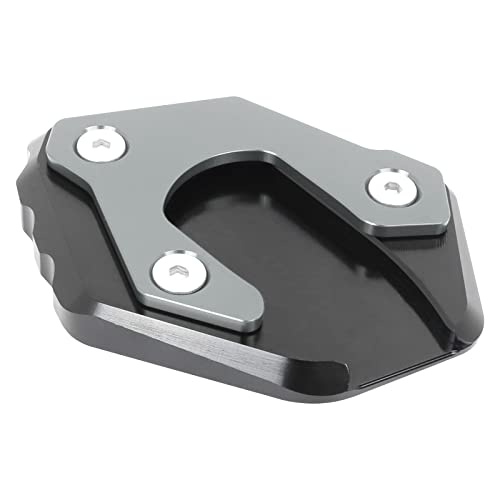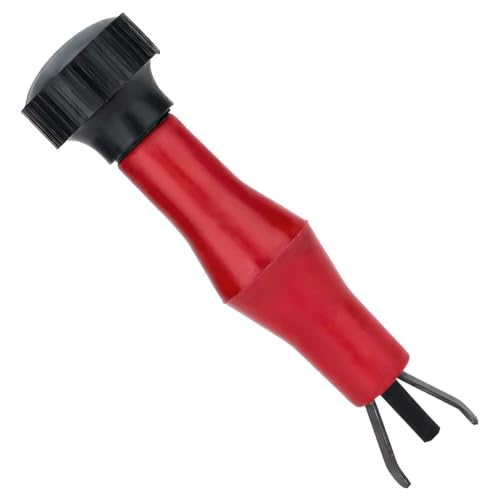RossKean
Well-known member
I am in the midst of sorting out some issues with electrical system on my bike (2007 "A"). I'm fairly sure where I am headed with it but wanted a little input on some stuff. In particular, I am interested in failure modes for some of the key components. If good information is generated here, it might be a useful reference to assist others with charging issues.
R/R (Regulator/rectifier) - does this unit typically produce a "hard" fail. i.e., Does it go instantly from working properly to complete failure? Is there a short (or long) interim period where it may not produce enough amps although still work, after a fashion? Will it produce the amps but perhaps not properly rectify the output from the stator? How many people have had to replace a R/R on an FJR?
Stator - I guess the same main questions... Assuming that the magnets remain intact and in their proper places, is a hard failure (i.e. wire short or open) most likely? Do you expect to see gradual "weakening" in terms of the stator being able to produce enough amps to keep the bike (and battery) happy? I assume this could be caused by magnets weakening due to heat exposure? Other causes?
Battery - I pretty much understand the (multitude of) failure modes possible with lead-acid batteries but I thought I would include it for the sake of information for anyone who encounters this thread. (Just dealing with symptoms, not the chemistry or physical conditions for this - those are separate topics.)
AGM (Absorbent glass mat) batteries can simply degrade over time with gradually lowered capacity (soft failure). In addition to simply having lowered capacity, the battery will also have diminished ability to maintain voltage under load due to increased internal resistance. Such batteries are particularly susceptible to current delivery problems when operating at lower temperatures. All batteries will eventually succumb to this. Older AGM batteries will often exhibit a greater self-discharge rate which means they can function normally but end out "flat" after a week of inactivity.
A cell can short which may give you a low "charged" voltage. Often not a "hard" short but very much lowered resistance between adjacent cells. The battery may appear to take a charge and function normally for a time and the next day it could be showing 10V. More common with liquid electrolyte "car" batteries.
Open (total) failure. 'Nuff said; open internal connection somewhere and it is toast. Can happen with a new battery.
AGMs don't like overcharge or deep-discharge. Will also last longer in cooler temperatures.
Wiring - I think this is where I am going with this although it will depend on what I hear back from people. I read dcarver's (long) thread on the issues he had a few years ago https://www.fjrforum.com/forum//index.php/topic/146331-krzy8-gen2-charging-circuit/ . Also another thread - https://www.fjrforum.com/forum//index.php/topic/168308-how-to-check-rr-voltage-on-a-gen-ii/ . It is clear that a number of people had chronic voltage/charging issues fixed by using an auxiliary harness between the R/R and the battery. I don't dispute the results but I am wondering if anyone has any insight as to why this happened; especially after many years of "normal" operation? Has anyone identified the specific connections where high(er) resistance has caused a voltage drop on the order of 0.5 V to 1.0 V? Are there any other wiring-related problems people have discovered which degraded charging performance? (Battery connections are an obvious (common) problem and I have double checked this)
Anyway, my situation is that I am seeing less voltage at the battery than I like (13.3 at idle and 13.7 or so at 2500 rpm). I have had a couple of instances where the battery voltage had dropped to a point where the bike did not run properly and a couple of times I needed to boost it to start. Although battery condition is questionable (163,000 miles and over 9 years), it will charge properly with an external charger and will operate the bike normally with respect to starting etc. I am thinking it is at least partially charging while operating but perhaps not enough to sustain it. I am replacing the battery and will check to see if the voltage issues remain. If that is the case (and I think it will be), I will need to look into wiring harness, R/R and or stator. I want to be back to a completely healthy electrical system before I commit to a couple of long trips planned for next season.
I would appreciate other suggestions of things I should consider as well as information/experiences with R/R or stator problems. -Thanks
Edit: I found some interesting videos on checking MOSFETs, R/R and stators (as well as installation of their products) at roadstercycle.com.
https://roadstercycle.com/Roadstercycle.com%20Videos.htm
R/R (Regulator/rectifier) - does this unit typically produce a "hard" fail. i.e., Does it go instantly from working properly to complete failure? Is there a short (or long) interim period where it may not produce enough amps although still work, after a fashion? Will it produce the amps but perhaps not properly rectify the output from the stator? How many people have had to replace a R/R on an FJR?
Stator - I guess the same main questions... Assuming that the magnets remain intact and in their proper places, is a hard failure (i.e. wire short or open) most likely? Do you expect to see gradual "weakening" in terms of the stator being able to produce enough amps to keep the bike (and battery) happy? I assume this could be caused by magnets weakening due to heat exposure? Other causes?
Battery - I pretty much understand the (multitude of) failure modes possible with lead-acid batteries but I thought I would include it for the sake of information for anyone who encounters this thread. (Just dealing with symptoms, not the chemistry or physical conditions for this - those are separate topics.)
AGM (Absorbent glass mat) batteries can simply degrade over time with gradually lowered capacity (soft failure). In addition to simply having lowered capacity, the battery will also have diminished ability to maintain voltage under load due to increased internal resistance. Such batteries are particularly susceptible to current delivery problems when operating at lower temperatures. All batteries will eventually succumb to this. Older AGM batteries will often exhibit a greater self-discharge rate which means they can function normally but end out "flat" after a week of inactivity.
A cell can short which may give you a low "charged" voltage. Often not a "hard" short but very much lowered resistance between adjacent cells. The battery may appear to take a charge and function normally for a time and the next day it could be showing 10V. More common with liquid electrolyte "car" batteries.
Open (total) failure. 'Nuff said; open internal connection somewhere and it is toast. Can happen with a new battery.
AGMs don't like overcharge or deep-discharge. Will also last longer in cooler temperatures.
Wiring - I think this is where I am going with this although it will depend on what I hear back from people. I read dcarver's (long) thread on the issues he had a few years ago https://www.fjrforum.com/forum//index.php/topic/146331-krzy8-gen2-charging-circuit/ . Also another thread - https://www.fjrforum.com/forum//index.php/topic/168308-how-to-check-rr-voltage-on-a-gen-ii/ . It is clear that a number of people had chronic voltage/charging issues fixed by using an auxiliary harness between the R/R and the battery. I don't dispute the results but I am wondering if anyone has any insight as to why this happened; especially after many years of "normal" operation? Has anyone identified the specific connections where high(er) resistance has caused a voltage drop on the order of 0.5 V to 1.0 V? Are there any other wiring-related problems people have discovered which degraded charging performance? (Battery connections are an obvious (common) problem and I have double checked this)
Anyway, my situation is that I am seeing less voltage at the battery than I like (13.3 at idle and 13.7 or so at 2500 rpm). I have had a couple of instances where the battery voltage had dropped to a point where the bike did not run properly and a couple of times I needed to boost it to start. Although battery condition is questionable (163,000 miles and over 9 years), it will charge properly with an external charger and will operate the bike normally with respect to starting etc. I am thinking it is at least partially charging while operating but perhaps not enough to sustain it. I am replacing the battery and will check to see if the voltage issues remain. If that is the case (and I think it will be), I will need to look into wiring harness, R/R and or stator. I want to be back to a completely healthy electrical system before I commit to a couple of long trips planned for next season.
I would appreciate other suggestions of things I should consider as well as information/experiences with R/R or stator problems. -Thanks
Edit: I found some interesting videos on checking MOSFETs, R/R and stators (as well as installation of their products) at roadstercycle.com.
https://roadstercycle.com/Roadstercycle.com%20Videos.htm
Last edited by a moderator:




















































